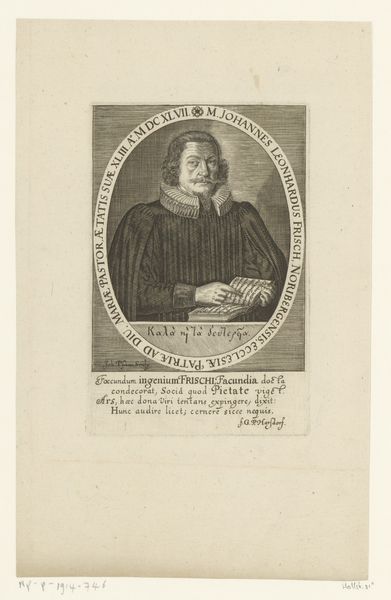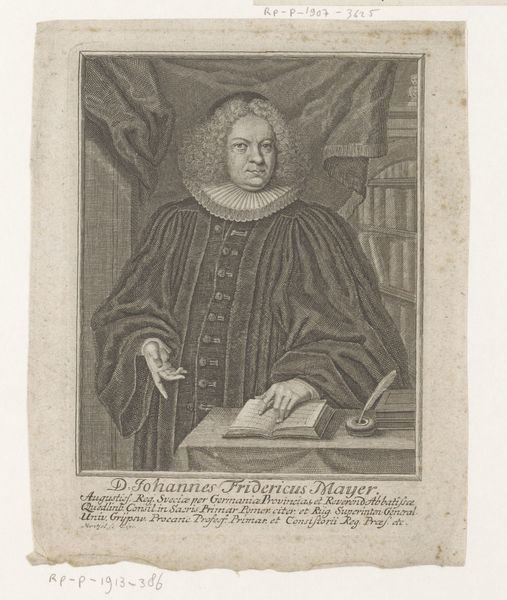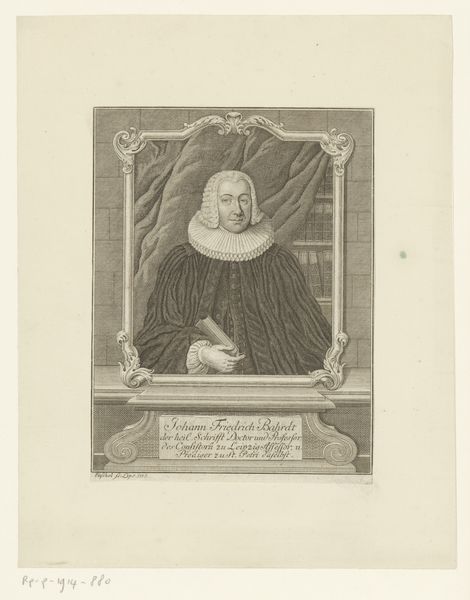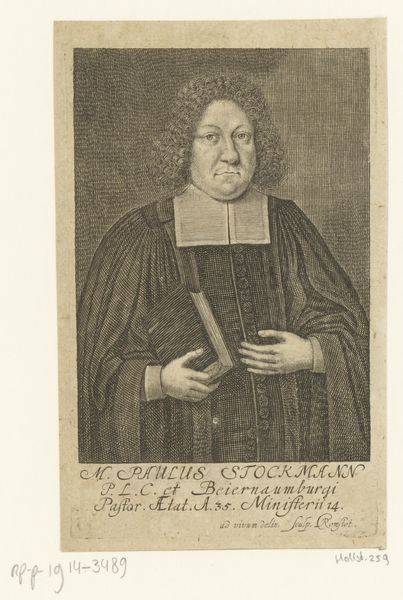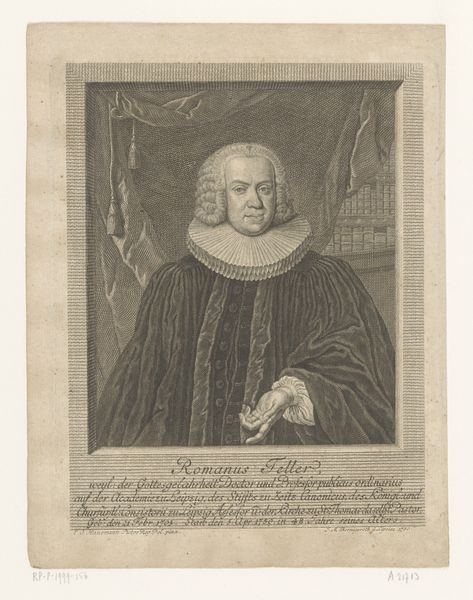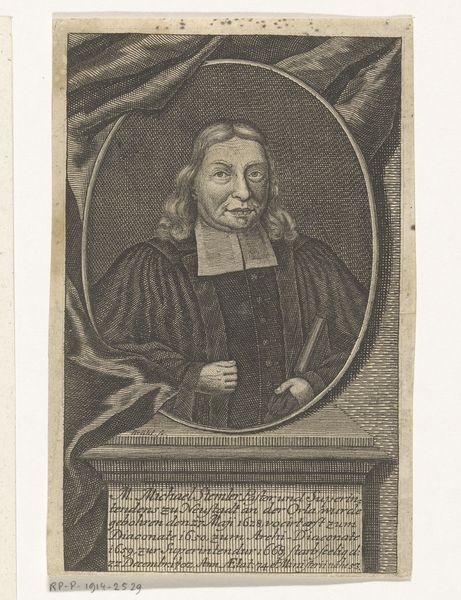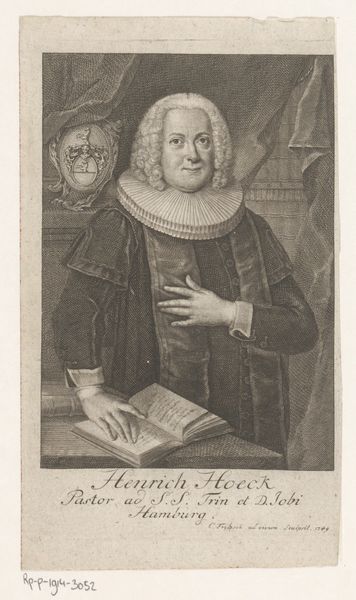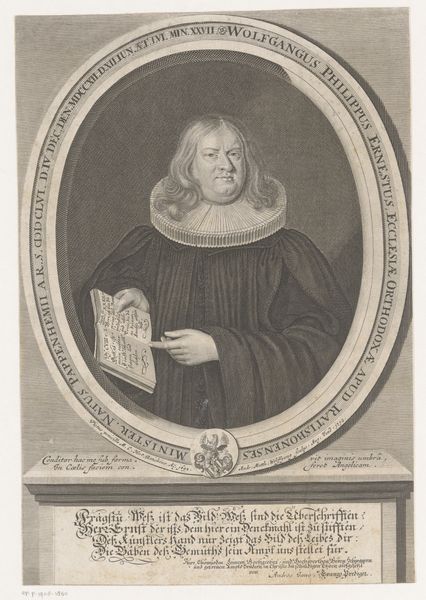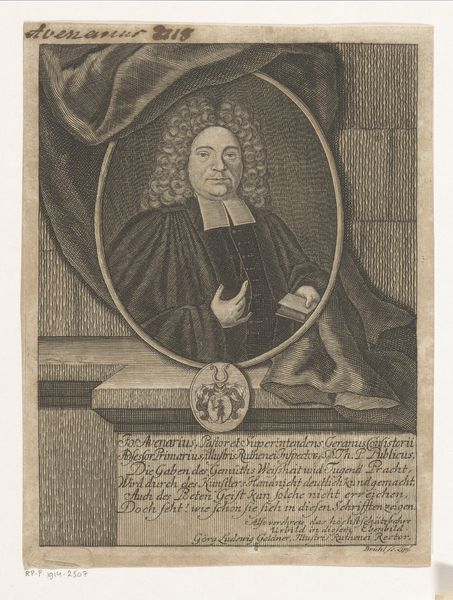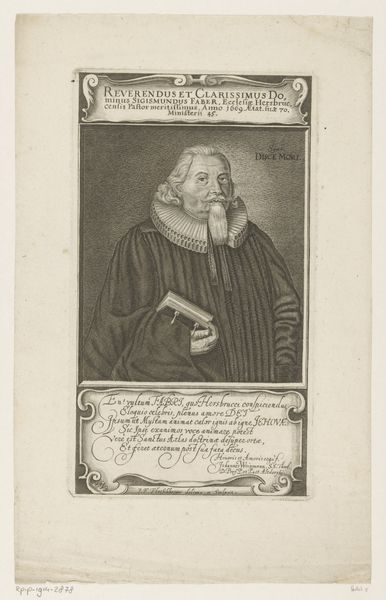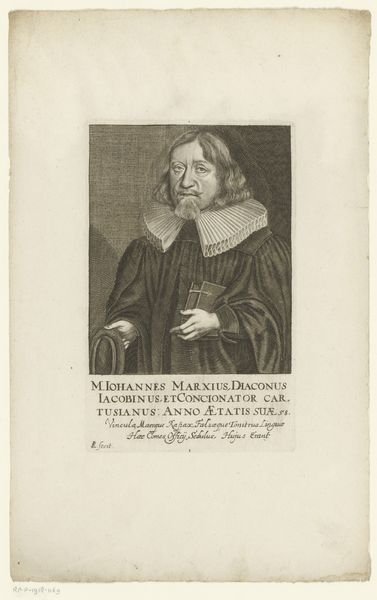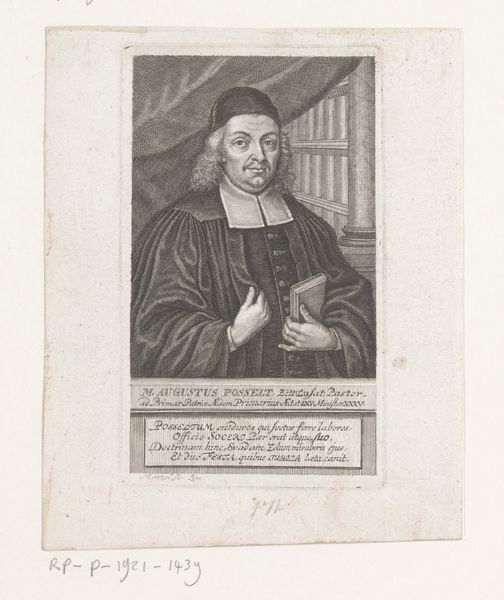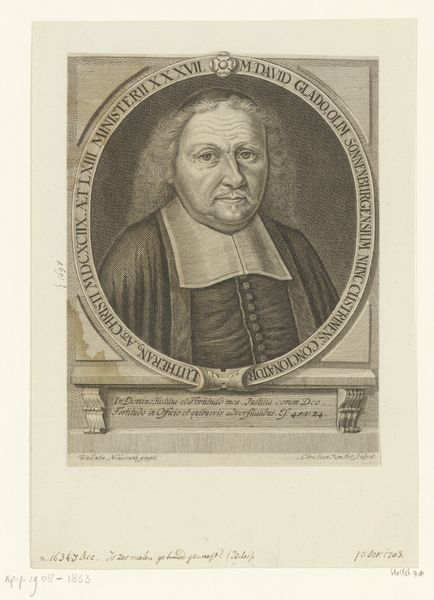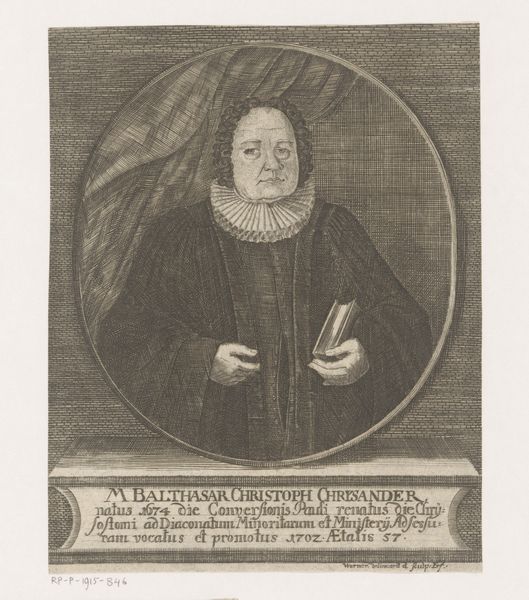
print, engraving
#
portrait
#
baroque
# print
#
old engraving style
#
portrait reference
#
history-painting
#
engraving
Dimensions: height 183 mm, width 153 mm
Copyright: Rijks Museum: Open Domain
Curator: So, here we have Christian Romstet’s "Portret van August Pfeiffer," dating sometime between 1665 and 1721. It’s an engraving, which always fascinates me. Editor: It strikes me as a portrait imbued with the gravity of scholarship. There's a certain... heaviness to the composition, perhaps enhanced by the darker tones typical of engravings. But let's talk about this 'engraving' part... what were these early processes *really* like? Curator: Well, an engraving like this involved meticulously carving lines into a metal plate, usually copper, applying ink, and then pressing it onto paper. Imagine the labor, the focused precision! It feels a world away from our digital age. I imagine Romstet feeling he's capturing the sitter's very soul in the lines... Editor: Absolutely, labor is crucial here! Engraving was skilled artisan work and, the materials - copper plates, inks, papers - they represent trade routes, knowledge dissemination... This wasn't just "art", this was craft meeting commerce head-on. And all that Latin text, quite exclusionary! Curator: Yes, the Latin definitely signals an educated, elite audience. And what about Pfeiffer himself? The portrait exudes this sense of dignified seriousness, almost like he’s contemplating profound theological mysteries right before our eyes. That frilled collar is so starched! I almost feel I know more than I ought to. Editor: Materially, that collar tells a story. The labor in making the lace, the social codes it implies... portraits like these weren't simply about likeness. They were statements of status, reliant on production chains we often forget when seeing them in pristine gallery conditions now. He looks quite 'important' -- what exactly did he do? Curator: August Pfeiffer was a prominent theologian and doctor, hence the open book suggesting scripture and learning. Romstet subtly reveals both Pfeiffer's intellectual prowess and the weight of tradition on his shoulders. It all lends the piece a quiet sort of contemplative energy, wouldn’t you agree? Editor: I see the energy more as *contained*. Look at that gesture -- it reads as more self-controlled that it does revealing to me. Regardless, looking closely at art objects through this lens gives us a fuller understanding not only about this person, but of the networks and materials circulating around him in his lifetime. It does lead us down intriguing historical paths. Curator: Exactly, the threads of history embedded in its making. Fascinating, indeed!
Comments
No comments
Be the first to comment and join the conversation on the ultimate creative platform.
